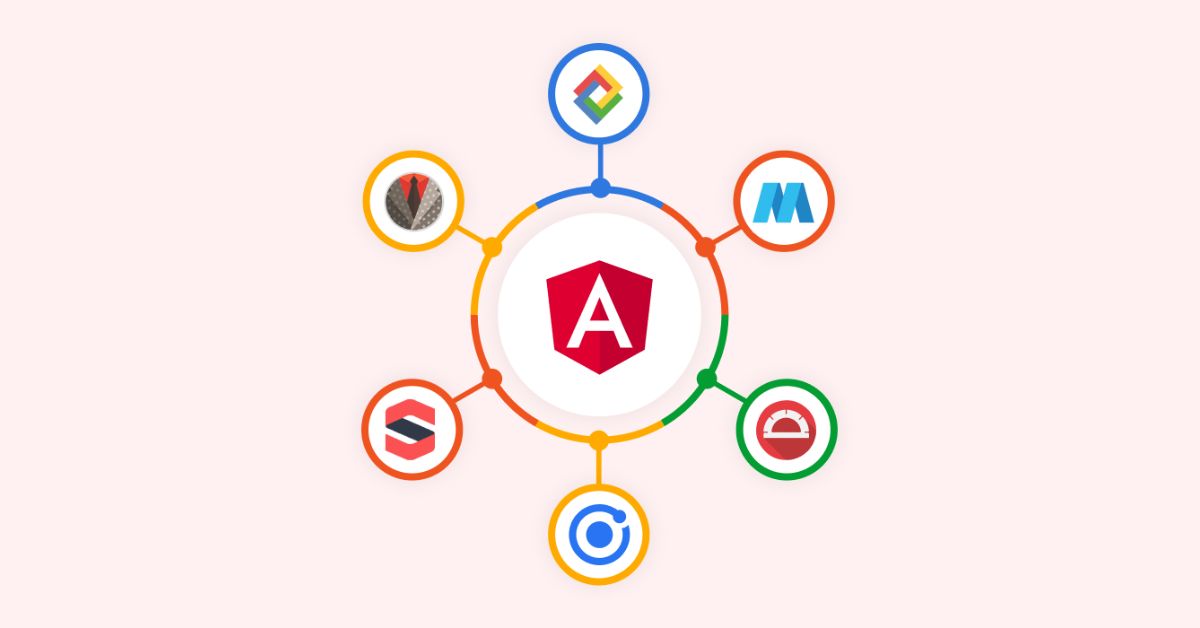What Is Java Microservices?
Java Microservices is a concept that has gained immense popularity in recent years, revolutionizing the way software applications are designed and developed. This groundbreaking approach involves breaking down monolithic applications into smaller, loosely coupled services known as microservices, which can be independently deployed and scaled to meet specific business needs. With the rise of cloud computing and distributed systems, microservices architecture in Java has become increasingly relevant for building scalable and resilient applications. To implement this architecture effectively, developers rely on a range of frameworks specifically designed for Java microservices such as Spring Boot, Dropwizard, and Micronaut. These java frameworks provide essential features including service discovery, load balancing, fault tolerance mechanisms like circuit breakers or retries. A comprehensive understanding of these microservice frameworks enables developers to efficiently build robust microservice-based solutions using Java. In this article, we will provide an overview of the key concepts involved in Java microservices and explore some of the most popular Java microservice frameworks. We will also provide a few use cases to illustrate how these frameworks can be used to build.
Advantages of Java Microservices Architecture
The key advantages of using a microservices architecture over traditional monolithic applications are scalability, flexibility, and resilience. Microservices architecture is gaining popularity among developers due to its numerous advantages.
Scalability: Microservices are inherently scalable, as they can be divided into smaller units and deployed in a decentralized manner. This enables them to be scaled up or down depending on the need without affecting the overall performance of the system.
Flexibility: Microservices can be designed to meet specific business requirements and are therefore more flexible than traditional monolithic applications. They can be easily adapted to change in response to changes in the business environment. Microservices allow for independent development and deployment of each component, enabling teams to work on different services simultaneously. This agility promotes faster delivery and reduces time-to-market.
Resilience: Microservices are designed to be resilient to failures and can be scaled up to handle increased demand. They are also capable of recovering from unexpected events and handling load fluctuations. This makes them well-suited for applications that need to be highly available and able to handle spikes in traffic.
Key Components of Java For Microservices
Microservices architecture is made up of several key components that work together to create a scalable and flexible system. These components, when properly implemented, help achieve the desired benefits of microservices.
One crucial component is the service registry. It acts as a centralized directory where all the individual services register themselves. This allows other services to discover and communicate with them easily. With a service registry in place, developers can dynamically add or remove services without affecting the overall system.
Another important component is API gateways. They serve as an entry point for clients to interact with various microservices. API gateways handle authentication, load balancing, and request routing among different services. By providing a unified interface, they simplify client access and ensure consistent communication across the system.
Message brokers play a vital role in enabling asynchronous communication between microservices. They act as intermediaries that facilitate message exchange between different parts of the system. Message brokers decouple senders from receivers, allowing each service to operate independently while maintaining loose coupling.
Containerization platforms like Docker are also essential components in a microservices architecture. Containers provide isolated environments for running individual services along with their dependencies, ensuring consistency across different development stages and deployment environments.
Monitoring tools are necessary for tracking performance metrics and detecting issues within distributed systems composed of multiple microservices working together cohesively.
These key components form the foundation of a robust microservice architecture by improving scalability, flexibility, and Another key component is the service bus. It is a platform-agnostic communication layer that enables services to interact with each other. The service bus can be used to deploy and manage microservices, as well as to coordinate their activities across the maintainability while enabling effective collaboration among teams working on different parts of an application.
Popular Java Microservice Frameworks
1. Spring Boot
Introduction to Spring Boot
Spring Boot is a powerful microservice framework for building Java for microservices. It provides a streamlined and opinionated approach to developing applications, making it easier than ever before to create robust and scalable microservices.
Features and Benefits
One of the main advantages of Spring Boot is its simplicity. It eliminates the need for boilerplate code and configuration, allowing developers to focus on writing business logic instead. With its convention-over-configuration approach, Spring Boot automatically configures many aspects of the application, reducing development time and effort.
Another key feature of Spring Boot is its embedded server, which allows applications to run without the need for external web servers. This makes it ideal for creating lightweight microservices that can be deployed independently.
In addition to its ease of use, Spring Boot also offers extensive support for various technologies and frameworks. It integrates seamlessly with popular libraries like Hibernate for database access, and Thymeleaf for templating engine.
Building Microservices with Spring Boot
Spring Boot is a powerful and easy-to-use framework for building Java microservices. Its robust integration capabilities, lightweight containerization, and reactive programming features make it an excellent choice for developing high-performance, scalable applications. Building microservices with Spring Boot offers developers a powerful yet simplified approach to creating robust and scalable applications. Its extensive featureset combined with its ease of use make it an ideal choice for organizations looking to adopt a microservice architecture.
Hire Spring Boot Developer
Develop fast, secure, and standalone applications with our Experince Spring Boot developers. Our Spring Boot developers can design, build, and scale flexible architectures.
2. Micronaut
Introduction to Micronaut
Micronaut is a modern, lightweight, and fast microservices framework for Java. It was designed specifically to address the challenges of building cloud-native applications with minimal resource usage. With its innovative approach, Micronaut aims to simplify development without compromising performance.
Lightweight and Fast Microservices with Micronaut
Micronaut is a lightweight and fast microservices Java framework that has gained popularity for its exceptional performance and efficiency. One of the key reasons why Micronaut stands out in the crowded microservices landscape is its innovative approach to compilation and runtime behavior. Unlike traditional frameworks that rely on runtime reflection and proxies, Micronaut leverages ahead-of-time (AOT) compilation to produce highly optimized and efficient code.
Key Features and Use Cases
One of the key features of Micronaut is its ability to start up quickly and consume minimal memory, making it ideal for cloud-based applications.
Unlike traditional frameworks, Micronaut uses compile-time dependency injection instead of runtime reflection, resulting in improved performance and reduced startup times. Additionally, Micronaut supports various languages such as Java, Groovy, and Kotlin, providing flexibility for developers.
Another advantage of using Micronaut is its support for reactive programming. With built-in support for non-blocking I/O operations and asynchronous programming models like RxJava or Project Reactor, developers can easily build highly scalable and responsive microservices.
3. Quarkus
Quarkus: The Supersonic Subatomic Java Framework
Quarkus, the supersonic subatomic Java framework, brings a whole new level of efficiency and performance to microservices architecture. With its lightweight nature and fast startup time, Quarkus is perfectly suited for developing and deploying microservices.
Combining Quarkus with Microservices
One of the key features that makes Quarkus stand out is its ability to compile applications ahead of time into native executables using GraalVM. This results in incredibly fast startup times and reduced memory footprint for your microservices. In fact, Quarkus claims to be up to 100 times faster than traditional Java frameworks!
Another advantage of using Quarkus for microservices development is its extensive support for reactive programming. Reactive microservices can handle high loads without sacrificing responsiveness or scalability. With built-in support for reactive libraries like Mutiny and Vert.x, Quarkus empowers developers to build highly responsive and resilient microservice architectures.
Performance and Resource Efficiency
Combining Quarkus with microservices enables developers to create high-performing, resource-efficient applications that are well-suited for cloud-native environments. Whether you’re building a simple REST API or a complex distributed system, Quarks provides the tools and capabilities needed to develop robust microservice architectures.
Java Microservice Examples
One popular Java microservice example is the Netflix streaming platform. Netflix has embraced microservices architecture to build their highly scalable and resilient system. Each component of the platform, such as user authentication, content recommendation, and video streaming, is implemented as an independent microservice.
Another prominent example is Uber. The ride-sharing giant relies on a multitude of microservices to power its app and backend systems. From handling user requests to managing driver allocation and payment processing, each aspect of Uber’s operations is handled by separate microservices that communicate with each other through APIs.
Twitter also leverages the power of Java microservices in its infrastructure. With millions of users tweeting every second, Twitter’s system needs to be able to handle high traffic loads efficiently. By breaking down their monolithic application into smaller services, they can scale different components independently based on demand.
The e-commerce giant Amazon is another great example of using Java microservices effectively. Their website consists of numerous services working together seamlessly behind the scenes – from product catalog management to order processing and fulfillment – all running independently as individual microservices.
These Java microservice examples demonstrate how organizations across various industries are adopting Java microservices for building scalable and flexible systems that can handle large volumes of data and transactions efficiently.
By implementing this architectural approach, companies can achieve greater agility in development, deployment, testing, and scaling processes while minimizing downtime caused by changes or failures in one particular service.
These real-world examples highlight how the use of Java-based microservices enables organizations to create robust applications that can easily adapt to changing business requirements while delivering superior performance at scale without compromising reliability or security.
Enhance Your Applications with Our Java Microservices Solutions!
Revolutionise Your Software Architecture with our Cutting-edge Java Microservices. Unlock Scalability, Flexibility, and Efficiency for Your Applications.
Use Cases of Java Microservices
Java microservices architecture is widely used in various industries and can be applied to a range of use cases. Here are some examples:
- Scalability and Load Balancing: One of the main advantages of microservices is the ability to scale individual components independently, allowing for better load distribution. With Java microservices, you can easily scale specific services based on demand, ensuring optimal performance even during peak times.
- Resilience and Fault Tolerance: Microservices help increase application resilience by isolating failures to specific services rather than affecting the entire system. Java microservices frameworks provide built-in fault tolerance mechanisms like circuit breakers and retries, ensuring that your application remains stable and available.
- Simplified Development and Deployment: Java microservices allow for modular development, enabling teams to work on different services simultaneously without dependencies on each other’s codebase. This promotes faster development cycles and facilitates continuous deployment practices.
- Microservices in Cloud Environments: Java microservices are well-suited for cloud-based deployments due to their lightweight nature and scalability capabilities. They enable organizations to leverage cloud infrastructure resources efficiently while benefiting from automated scaling options provided by cloud platforms.
- Legacy Systems Modernization: Many enterprises have legacy systems that are complex monoliths with limited flexibility or scalability options. By adopting a microservice architecture using Java frameworks, these systems can be gradually modernized into more agile, scalable, and maintainable solutions.

You might want to read
Best Practices for Java Microservices Development
When it comes to developing Java microservices, there are several best practices that can help ensure success. These practices focus on scalability, maintainability, and overall efficiency of the microservices architecture.
It is crucial to design each microservice around a specific business capability or domain. This allows for better separation of concerns and makes the codebase more modular and manageable. Additionally, using lightweight frameworks such as Spring Boot can simplify development and deployment processes.
Another important practice is to prioritize loose coupling between microservices. By implementing well-defined APIs and adhering to RESTful principles, you can minimize dependencies and enable independent development and deployment of each service.
Monitoring and logging are essential for the maintenance of any microservices ecosystem. Implementing robust logging mechanisms not only helps with debugging but also provides valuable insights into system performance. Similarly, monitoring tools like Prometheus or Grafana allow you to track metrics such as response times and error rates.
To ensure resiliency within your application, it’s essential to implement fault tolerance mechanisms such as circuit breakers or bulkheads. These safeguards prevent cascading failures by isolating failing services from others during periods of high load or failure.
Automated testing should be an integral part of your development process. Unit tests validate individual components while integration tests verify communication between different services. Continuous Integration/Continuous Deployment (CI/CD) pipelines facilitate automated testing as well as seamless deployment.
By following these best practices for Java microservices development, you can create scalable, maintainable applications that effectively meet business requirements without compromising performance or reliability.
Conclusion
In conclusion, Java microservices provide developers with a powerful and efficient way to create reliable applications that can be deployed quickly. By utilizing frameworks like Spring Boot, Quarkus, or Micronaut, developers can take advantage of the benefits of microservice architecture while avoiding common pitfalls associated with developing distributed systems. Furthermore, by understanding the use cases for Java microservices and some popular examples of their implementations in production environments, developers are better equipped to make informed decisions about when and how they should best utilize this technology. Alternatively, you can hire a Java Development Company such as GrapesTech Solutions to help you with microservices Java web application development.
FAQs
A huge program is divided into smaller, independent, and loosely linked services, which is referred to as a software architecture in Java as microservices. Each service is in charge of particular functionalities and is capable of independent development, deployment, and scaling.
Some of the benefits of using microservices in Java include improved scalability, easier maintenance, faster development cycles, better fault isolation, and the ability to use different technologies for different services.
There are several frameworks available to build Java microservices. Some popular ones include Spring Boot, Micronaut, Quarkus, Dropwizard, and Vert.x. These frameworks provide essential features and tools to simplify the development and deployment of microservices.
Consider an e-commerce application. Instead of building a monolithic application, you can break it down into microservices like User Service, Product Service, Order Service, and Payment Service, each handling their specific tasks.
Microservices can communicate using various protocols like HTTP/REST, messaging systems like RabbitMQ or Apache Kafka, or gRPC. HTTP/REST is a popular choice due to its simplicity and wide support.
Java microservices are suitable for various use cases, including e-commerce platforms, social media applications, banking systems, healthcare applications, IoT solutions, and any other complex systems where independent and scalable services are beneficial.
Java microservices can be deployed independently using containerization platforms like Docker and managed with container orchestration tools like Kubernetes. These technologies streamline the deployment and scaling process for microservices.















